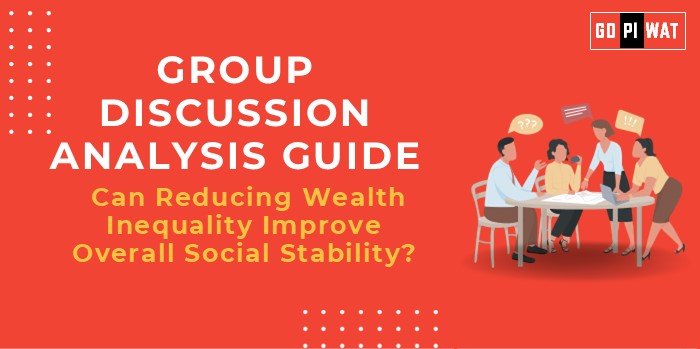💰 Can Reducing Wealth Inequality Improve Overall Social Stability?
🌐 Introduction to the Topic
Opening Context: “Wealth inequality, a persistent issue across nations, directly impacts societal cohesion and stability. Reducing the wealth gap holds potential as a critical tool for fostering harmonious and sustainable societies.”
Background: Wealth inequality refers to the uneven distribution of assets among a population. Studies link high inequality levels to increased crime rates, social unrest, and reduced economic growth. Recent events like global protests and policy debates in G7 nations have highlighted its pressing importance.
📊 Quick Facts and Key Statistics
- Wealthiest 1% control 45.6% of global wealth (Credit Suisse, 2023).
- Gini Coefficient Trends: Nations with lower Gini indices, such as Norway (0.26), report higher social stability than those with higher indices, like South Africa (0.63).
- Global Poverty Stats: Over 700 million people live on less than $1.90/day, emphasizing stark wealth disparities.
- Crime Correlation: Studies show a 0.8 correlation between income inequality and violent crimes (UNODC, 2022).
👥 Stakeholders and Their Roles
- Governments: Implement redistributive policies and social welfare programs.
- Private Sector: Drive inclusive growth by creating equitable employment opportunities.
- Civil Society: Advocate for rights and policies addressing inequality.
- International Organizations: Provide frameworks for sustainable development (e.g., SDGs by the UN).
📈 Achievements and Challenges
Achievements
- Countries like Scandinavia show the success of welfare states in reducing inequality.
- Programs like India’s PMGKY (Garib Kalyan Yojana) uplift millions through direct benefit transfers.
Challenges
- Resistance to wealth redistribution policies in capitalistic economies.
- Rising automation increasing the wealth gap due to job polarization.
Global Comparisons
- Nordic countries: High social mobility and stability via progressive taxation.
- USA: High inequality often linked to healthcare and educational disparities.
Case Studies
- Kerala, India: Notable reductions in poverty and inequality through social welfare programs.
💡 Structured Arguments for Discussion
- Supporting Stance: “Reducing wealth inequality fosters inclusive growth and minimizes crime and political unrest.”
- Opposing Stance: “Excessive focus on equality can deter investment and innovation in competitive markets.”
- Balanced Perspective: “While wealth redistribution is essential, structural reforms addressing education and healthcare inequality are equally vital.”
🗣️ Effective Discussion Approaches
- Opening Approaches:
- “The wealthiest 1% of people own as much wealth as the rest of humanity combined.”
- “Nordic models offer a blueprint for balancing equality and growth.”
- Counter-Argument Handling: Address resistance to wealth redistribution by emphasizing the economic benefits of social stability (e.g., reduced crime).
📋 Strategic Analysis: Strengths and Weaknesses
- Strengths: Proven success of welfare states, measurable economic benefits of reduced inequality.
- Weaknesses: Resistance from wealthy elites, implementation challenges.
- Opportunities: Technology enabling wider access to education and healthcare.
- Threats: Global economic shocks exacerbating inequality.
🎓 Connecting with B-School Applications
- Real-World Applications: Relevant to ESG (Environmental, Social, Governance) strategies, CSR (Corporate Social Responsibility), and impact investing.
- Sample Interview Questions:
- “How can businesses contribute to reducing wealth inequality?”
- “Discuss the role of technology in bridging wealth gaps.”
- Insights for B-School Students:
- Understand the intersection of business ethics and social policy.
- Consider roles in impact-oriented ventures or NGOs.


